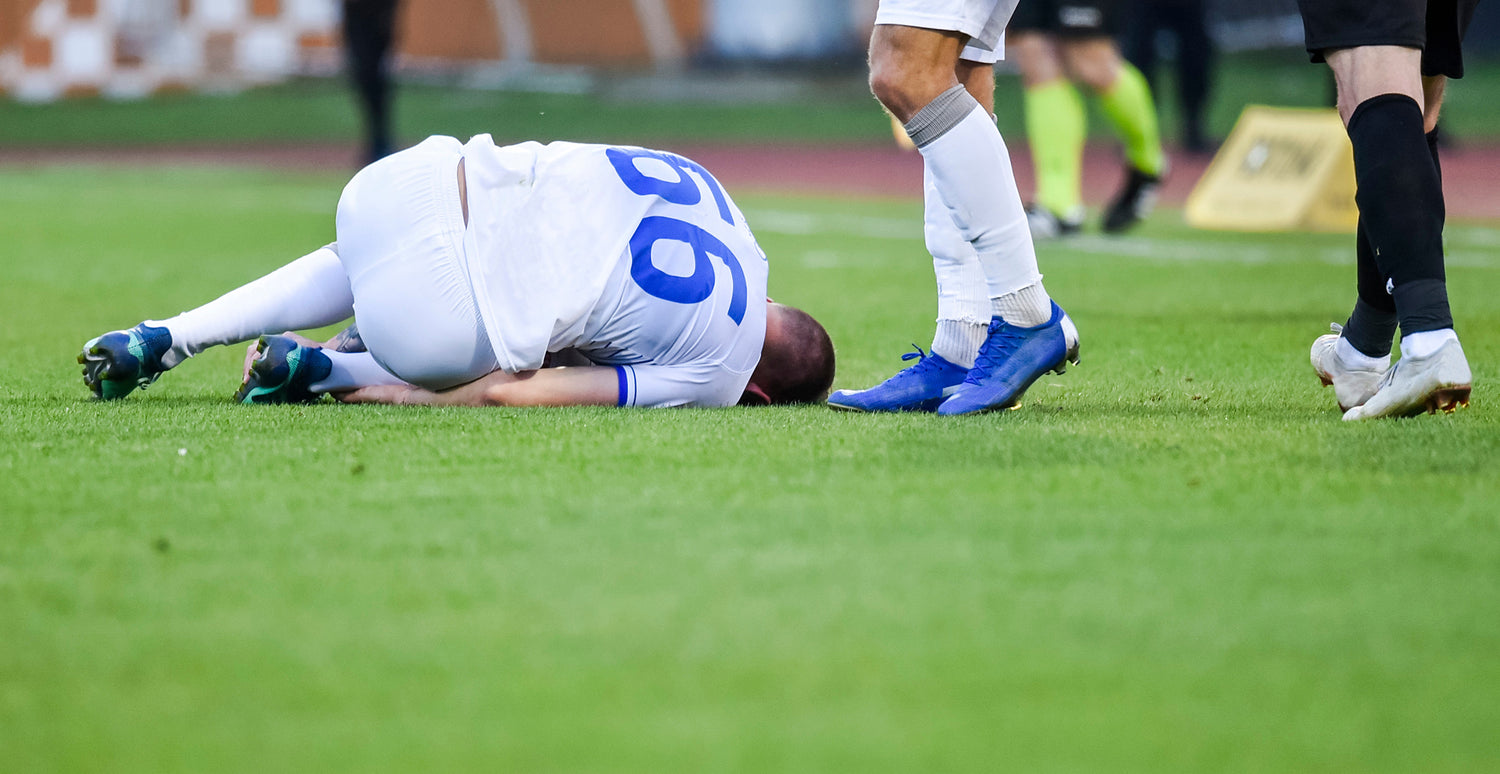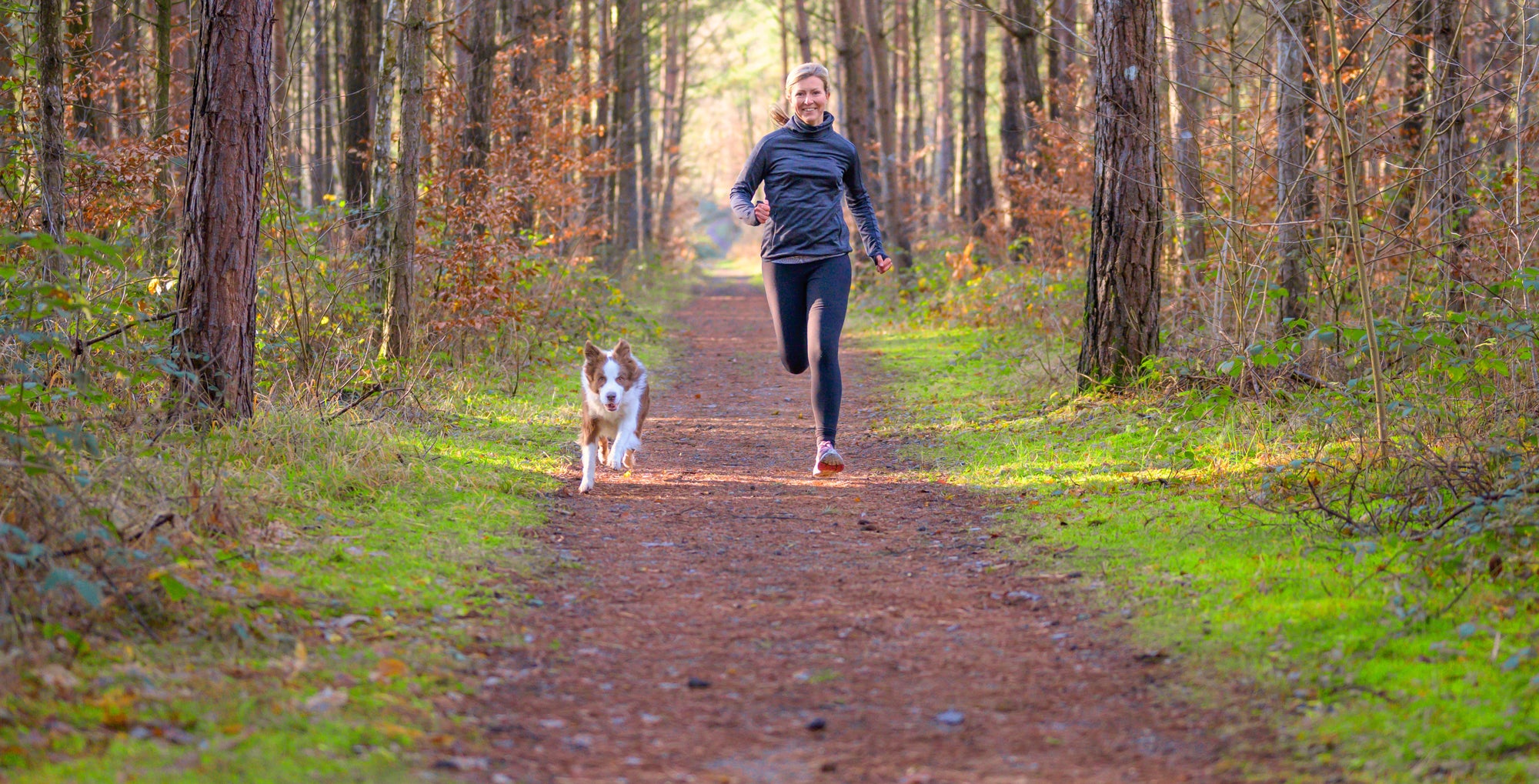Football (or soccer, for those who play a version of football with their hands) unites millions of people around the world. Unfortunately, like any contact sport, football comes with its own share of injuries. If you play the game or are thinking about doing so - World Cup inspiration, anyone? - then here are five of the most common football injuries and tips for recovering from them.
What to do about swelling
Before we get started, we should address ice. Chilly and often added to drinks, you’ve no doubt also used ice (or frozen peas) to numb the pain of an injury and reduce inflammation and swelling. We’ve addressed this before in our common rugby injuries guide, but there are some schools of thought that say applying ice to reduce inflammation can limit the early stages of the healing process.
It’s not definitive which approach - ice or no ice - is better, but we want to keep you up to date with the latest information. All that said, many guides and health professionals will still advise the use of ice.
Electrotherapy is another effective solution for both managing pain and inflammation. It can even support healing as well by promoting blood flow to the area!
Now, about those injuries. In no particular order…

1. Lateral ankle sprain
A lateral ankle sprain is when the foot rolls inwards, under the foot. This then stretches the ligaments (tissue that connects bone to bone) on the outside of the ankle. If the force on the ligaments is strong enough, or they are already suffering, perhaps due to multiple smaller stresses, then the ligaments can be hurt.
You’ve probably come surprisingly close to doing this several times and it is quite easy to do on the football pitch, often when landing from a jump.
Lateral ankle sprains can vary from just stretching the ligament too much to a complete or partial tear of the ligament.
Recovery for this obviously varies with severity, but generally involves resting and protecting the injured area at the beginning, along with monitoring swelling. Once it’s not too painful, you should start rehabilitation exercises to strengthen the ankle. These often include rotating the ankle, rolling the foot inwards and outwards (like the injury in the first place, just more gently), and balance exercises.
If none of the non-surgical options have worked, then surgery may be needed to fix the damage.
Overall, recovery should take about 8 weeks unless surgery was needed. When returning to playing football after this, you should reinforce the joint somehow - maybe with an ankle brace or tape - for about 6 months.
2. ACL tear

A nasty injury. The anterior cruciate ligament (ACL) goes diagonally through the knee and is important for preventing the knee from rotating too much. Damage to the ACL is usually the result of a sudden impact. This might be a tackle, but fancy moves that involve rapidly changing direction can also be a cause.
The ACL can either just be stretched or torn (partially or completely). In the case of a tear, the knee can feel unstable and trying to walk on it can easily result in further falling over and damage, although we would be impressed if you managed to walk after tearing your ACL!
However bad the injury, make sure to protect it and manage the pain and swelling. Recovery for a stretched ACL can usually be managed at home - although do see a professional first - with exercises to strengthen the muscles that influence the knee, such as the quadriceps. Strengthening these muscles will help support the knee as it heals and is extremely important if you need surgery (which almost all tears usually do) because it can prevent suboptimal outcomes after surgery, such as knee stiffness.
For better results when strengthening these muscles, you can employ electrical stimulation, such as delivered by our devices. This is because it optimises recovery and in doing so can improve the gains made.
If surgery is needed, then you will also need to work on being able to extend your knee fully and slowly improve how much weight you can put on it afterwards.
The other thing to bear in mind is that an ACL injury often comes with damage to other structures in the knee, particularly the meniscus (more on that later) and the MCL (another ligament).
Considering all of this, a minor ACL injury can take just a couple of weeks to heal, but a tear can take 6 months or more.
3. Meniscus damage

Each knee has two menisci, which act as shock absorbers and protect the bones of your leg. They’re usually injured if you suddenly twist your knee while your foot is stuck in the ground, which can easily happen if your studs are planted in a muddy pitch.
As always, protect the knee if you’ve injured your meniscus and keep the weight off. A partial tear or just a stretched meniscus can often heal without surgery. Exercises that can help include gentle squats, straight leg raises, hamstring curls, leg extensions, and standing heel raises. Remember that these might be a bit uncomfortable but shouldn’t hurt - your health professional will tell you the best exercises for your situation - and avoid deep squats or anything that twists the knee.
If surgery is needed, it can be done to either repair the meniscus or remove it (partially or completely). After this, it will be rehab again with more exercises.
Wondering about how long until you’re back on the football pitch after a meniscus injury? You’re looking at about 6-8 weeks, unless it needed surgery, in which case it’s much longer.
4. Hamstring strain

The hamstring is the large group of muscles at the back of the thigh, as well as the tendons that connect the large thigh muscle to the bones. Whenever you see a footballer pull up suddenly while running and clutch the back of their thigh, a hamstring problem is usually the reason.
Although the cause of hamstring injuries in football is not always clear, it’s likely due to excessive force running through the muscle and tendons. This can happen if you’ve not warmed up enough or are trying to push yourself when the muscle is already tired.
An injury to the hamstring can either stretch the muscle and tendons or partially or fully tear them. Just a stretch usually won’t be too limiting - although will obviously hurt - but more severe injuries can weaken the muscle and knee and make walking difficult.
Surgery is very rarely needed for a hamstring strain, usually only when the muscle tears completely, the rest of the time these injuries are managed with physiotherapy. A hamstring rehab routine should include balance exercises, cycling (maybe on a stationary bike), and then a range of strength building exercises in the later stages. These might include squats, lateral bounding, and gentle deadlifts.
Recovery time can range from a few days for a minor injury to weeks or months for more severe ones.
Unfortunately, once you’ve injured your hamstring, you’re likely to do so again, especially if you play football regularly, which makes an effective recovery routine essential.
5. Quadriceps strain

The quadriceps is a group of muscles at the front of your thigh - think of them as the counterpart to the hamstring.
The three main situations for injuring your quadriceps are the leg suddenly slowing down, like when you kick the ball, quickly changing direction, or pushing the muscles too hard, which is something easy to do in an intense football game!
There are three grades of quadriceps strain, with symptoms and impact similar to hamstring strains. No matter how bad it is, make sure to protect the injured area until the pain passes and see a doctor to see what should be done. Thankfully, surgery is rarely needed so the main thing to do is rest, manage the pain and inflammation, and then begin rehab exercises when the pain lessens.
As for exercises, it’s important to work on your range of motion as well as strength. To that end, stretches such as a static quad stretch, where you lift your heel to your bottom, are effective. For strengthening exercises, leg raises and step ups are good choices, as well as wall squats.
Recovery time for a quadriceps injury is usually up to 8 weeks.
How to avoid common football injuries
So now you know what the most common ones are, you’re probably wondering how to avoid them. Trying not to make the moves that lead to them - twisting knees, ankles, etc. - is difficult when you have to give 100% on the pitch. Instead, try these options.
- Warm up properly - loosen your muscles with some stretching and jogging for at least 10-15 minutes.
- Prepare for games - depending on what you want to get out of football, this might not be needed, but if you train separately to playing you will have a higher fitness level and be less likely to injure yourself. NuroKor Lifetech is a great way to optimise prehab.
- Rest properly - this doesn’t have to be sleep, but you need time resting to let your muscles recover. Don’t overdo it after a game.

How to use NuroKor Lifetech to optimise recovery from football injuries
It sucks when you’re stuck on the sidelines and not able to play as you want to. Although you do have to wait for your injuries to recover enough before you can resume playing, there are ways that you can boost your chances of getting back on the pitch sooner.
Our technology helps you to optimise your recovery by supporting the conditions needed for your body to effectively heal. It can have remarkable results, just ask Olly Butterworth, who was back on the pitch weeks earlier than expected.
Let us know your favourite footballing moments or share your stories of recovery with us!



